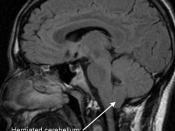Introduction
The 20th century may be recorded as one of the most hectic century of all times. Both the two World Wars have encouraged and forced medical students to look into the human body with more depth and detail. As the world became fascinated with the explicit structure of the human body, they were also able to discover the cure and treatment for many unknown diseases in the past. From insulin, to treatment of cancer, to coding of the DNA, doctors seem to be able to remedy anything. Yet, a part of the human body remains as an unsolved puzzle to the scientists of today. The human brain is a highly delicate mechanism found as part of the central nervous system. Its responsibilities include monitoring and regulating the activities carried out by the body, receiving and interpreting sensory impulses and transmitting information to the muscles and body organs. As well, the brain is the key of human consciousness, thought, memory, and emotion.
On a smaller scale, the brain is very similar to the nucleus, found in the eukaryotic cells. Both the nucleus and the brain direct growth and development. However, when a portion of the brain is absent, there will be a disastrous outcome. In a eukaryotic cell, when the nucleus is absent, it is almost impossible for the cell to function on its own. From this, it is evident that the brain is a complicated control center of the human body, yet factors that deteriorate it remain inexplicable.
Associated with the nucleus is the genetic material or DNA contained inside this nuclear structure. When alteration of any degree takes place in the DNA, it is identified as genetic mutation. The cause of mutations is nonetheless unknown, although scientists believe that these alterations happen spontaneously. Scientists also use this theory...


